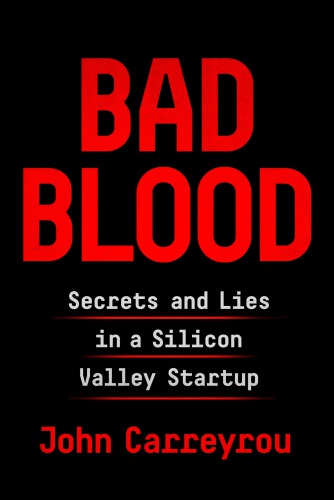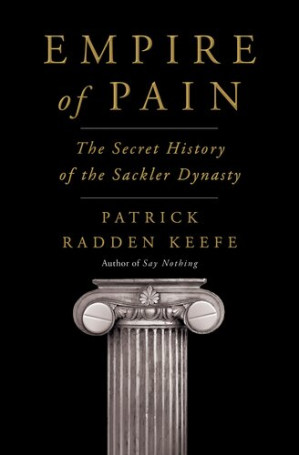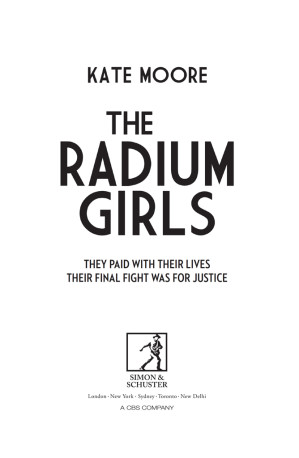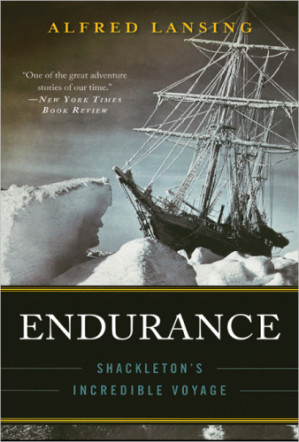Culture sets the tolerance for truth.
Theranos rewarded loyalty over competence, isolating teams and punishing questioners. The lesson: design reporting lines that encourage dissent and protect data integrity.

Book summary
by John Carreyrou
Inside Elizabeth Holmes's startup, the investors it duped, and the whistleblowers who shut it down
Theranos promised revolutionary blood tests—and delivered fraud
Topics
Read with two notebooks: one for Holmes's persuasion tactics, another for the employees who resisted. Tag every moment when data was manipulated or dissent punished, then translate those points into a compliance checklist using Readever's template library.
Things to know before reading
Wall Street Journal reporter John Carreyrou unravels how Theranos raised billions by claiming it could run hundreds of blood tests from a finger prick. Through interviews with lab workers, regulators, and investors, he reveals faked demos, silenced employees, and a cult of personality around founder Elizabeth Holmes. The book chronicles the legal battles that followed and the systemic vulnerabilities that allowed the scam to flourish.
Hype without verification endangers both patients and investors.
Theranos rewarded loyalty over competence, isolating teams and punishing questioners. The lesson: design reporting lines that encourage dissent and protect data integrity.
Carreyrou shows how seasoned investors skipped technical audits because they feared missing out. Use this as motivation to scrutinize claims even when elite names vouch for them.
Engineers like Tyler Shultz relied on mentors, reporters, and patient advocates to expose the truth. Build your own support network if you ever need to raise alarms.
Ready to continue? Launch the Readever reader and keep turning pages without paying a cent.

Patrick Radden Keefe
Corporate secrecy and aggressive marketing in the opioid crisis.

Kate Moore
A historical precedent for workers taking on dangerous science.

Alfred Lansing
A very different arena but the same lessons on leadership accountability.
Readever helps you log each governance failure—unchecked boards, NDAs, intimidation—and convert them into safeguards for your own company. Share the highlights as cautionary tales for exec teams.
Key idea 1
Theranos rewarded loyalty over competence, isolating teams and punishing questioners. The lesson: design reporting lines that encourage dissent and protect data integrity.
Key idea 2
Carreyrou shows how seasoned investors skipped technical audits because they feared missing out. Use this as motivation to scrutinize claims even when elite names vouch for them.
Key idea 3
Engineers like Tyler Shultz relied on mentors, reporters, and patient advocates to expose the truth. Build your own support network if you ever need to raise alarms.
Carreyrou reveals how Elizabeth Holmes built a $9 billion biotech startup on vaporware. He traces Theranos from its Stanford origins through stealthy demos, Walgreens negotiations, and the eventual cascade of whistleblowers who exposed false lab results endangering patients.
Open Readever's reader to highlight passages, ask the AI companion questions, and keep exploring without paying a cent.
The book won the Financial Times/McKinsey Business Book of the Year and was lauded for thriller pacing anchored by voluminous evidence. Critics praised Carreyrou for sticking with the story despite aggressive legal intimidation from Holmes and David Boies.
Critical reception: Bestseller in multiple countries, adapted into the Hulu series The Dropout, and frequently cited in ethics courses and boardrooms alike.
Startup founders and investors evaluating due diligence processes
Healthcare administrators overseeing lab quality
Compliance, legal, and HR teams building whistleblower channels
Fans of investigative nonfiction
John Carreyrou is a Pulitzer Prize-winning investigative reporter formerly with The Wall Street Journal. His work on Theranos earned him George Polk and Gerald Loeb awards. He hosts the "Bad Blood: The Final Chapter" podcast covering the trials.
Build your personalized reading stack
Export a Theranos red-flag checklist for board briefings.
Group highlights by stakeholder—employees, investors, regulators—for quick teaching sessions.
Compare this case with *Empire of Pain* inside Readever's accountability lane.
Share annotated quotes with your ethics or product teams in seconds.
Sign in to Readever to keep reading with AI guidance, instant summaries, and synced notes.
Bad Blood proves that mission rhetoric and black turtlenecks cannot replace validated science. It implores readers to ask for primary data, protect truth-tellers, and design boards that know how to say no.
Start reading Bad Blood for free and unlock personalized book journeys with Readever.